How Cold Exposure May Help Regulate MS-Related Mood Swings
🌪️ Introduction: The Emotional Rollercoaster of MS
Living with MS isn’t just a physical journey—it’s an emotional one, too. The neurological nature of the disease means that your mood is often along for the ride. Mood changes can be sudden, intense, and disorienting.
Common MS-related emotional symptoms include:
- Mood swings and irritability
- Anxiety or panic attacks
- Sudden crying or laughing (pseudobulbar affect)
- Depression or emotional numbness
- Emotional dysregulation during fatigue or flares
What makes these mood shifts so frustrating is how unpredictable they are—and how disconnected they can feel from external triggers.
While traditional approaches like medication and therapy are important, cold exposure is emerging as a nervous system-based intervention that may help restore balance from the inside out.
Want a cold plunge? Click here.
❄️ What Is Cold Exposure?

Cold exposure refers to any practice that lowers body temperature for therapeutic effect. It can take many forms:
- Cold showers
- Ice baths or cold plunges
- Outdoor cold immersion (lakes, rivers, snow walks)
- Ice packs or cold compresses (especially on the neck or face)
- Cryotherapy sessions (whole-body or localized)
While often used by athletes for recovery or by wellness enthusiasts for boosting metabolism, cold exposure may also influence neurotransmitters and nervous system function, both of which are closely tied to mood.
🧠 How MS Affects Mood Regulation
MS is a disease of the central nervous system. It damages the myelin sheath that protects neurons, disrupting communication between the brain and body. But it doesn’t just affect motor function or sensation—it can also impact emotional processing.
Some factors that contribute to mood dysregulation in MS include:
- Lesions in emotional regulation centers of the brain (frontal cortex, amygdala, limbic system)
- Chronic inflammation and immune activation
- Fatigue and cognitive overload
- Side effects of MS medications
- Changes in hormone levels and neurotransmitters
- Psychological impact of living with a chronic condition
That means mood swings in MS are not “just in your head”—they are neurologically and biologically real.
❄️ Cold Exposure and Emotional Regulation: What the Science Says

Cold exposure isn’t just about physical refreshment—it has powerful nervous system and brain effects that may help with emotional self-regulation.
Let’s look at the key ways cold therapy may support mood stability in MS.
Want a cold plunge? Click here.
✅ 1. Stimulates the Vagus Nerve
The vagus nerve is the main conduit between your brain and body. It controls the parasympathetic nervous system, which governs relaxation, digestion, and recovery.
Cold exposure—especially on the neck, face, and upper chest—can stimulate vagal tone, leading to:
- Decreased heart rate
- Reduced anxiety and panic
- Improved emotional resilience
- Lowered reactivity to stress
Vagal stimulation has even been used therapeutically in treatment-resistant depression. For people with MS, where emotional dysregulation often stems from nervous system dysfunction, this is a major benefit.
✅ 2. Boosts Mood-Enhancing Neurotransmitters
Exposure to cold has been shown to increase:
- Norepinephrine: Improves alertness, energy, and stress response
- Dopamine: Enhances motivation, mood, and pleasure
- Beta-endorphins: Natural painkillers that reduce distress and increase feelings of well-being
These brain chemicals can act as natural mood stabilizers, helping smooth out emotional highs and lows without pharmaceutical side effects.
✅ 3. Reduces Inflammation That Affects Mood
Neuroinflammation is increasingly recognized as a contributor to depression and emotional instability. In MS, chronic inflammation can heighten emotional responses and impair emotional processing.
Cold exposure has been shown to lower inflammatory markers such as:
- TNF-alpha
- IL-6
- CRP (C-reactive protein)
By reducing systemic and brain inflammation, cold therapy may create a more stable biochemical environment for emotional regulation.
✅ 4. Interrupts the Stress Response
Mood swings are often driven by overactivation of the sympathetic nervous system (fight-or-flight). Cold plunges cause an initial shock—but they also teach the body how to recover.
This can train the nervous system to:
- Stay calm during stress
- Shorten recovery time from emotional reactivity
- Improve resilience after meltdowns or flare-ups
Think of it as strength training for your emotions.
✅ 5. Improves Sleep Quality
Poor sleep is a major trigger for emotional instability in MS. Cold exposure may:
- Lower core temperature for better sleep onset
- Support melatonin production
- Calm the nervous system before bed (if timed properly)
Better sleep = better emotional regulation the next day.
⚠️ Important Caveats for MS Patients
While cold exposure can be incredibly beneficial, MS adds extra layers of complexity. It’s important to approach cold therapy with awareness.
✅ Use with caution if you have:
- Advanced autonomic dysfunction (blood pressure drops, fainting)
- Spasticity that worsens in cold
- Cardiovascular conditions
- Sensitivity to temperature extremes
- Recent MS flare or relapse
Never force cold exposure—it should be invigorating, not traumatic. Always start with gentle methods like cold face splashes or short showers.
🧊 How to Start Cold Exposure for Mood Regulation
✅ Step 1: Begin with Cold Face Exposure
This is the gentlest way to stimulate the vagus nerve.
- Splash your face with cold water
- Or place a cool compress on your neck and chest
- Try during moments of emotional overwhelm
Even 30–60 seconds can trigger calming effects.
✅ Step 2: Progress to Cold Showers
- End your regular shower with 30 seconds of cold
- Breathe slowly and deeply during the exposure
- Work up to 2–3 minutes if tolerated
Use after fatigue, flares, or emotionally charged events.
✅ Step 3: Try Full Cold Plunges (Optional)
- Use a tub or barrel with water between 10–15°C (50–59°F)
- Start with 1–2 minutes
- Focus on staying calm, not pushing limits
- Always warm up after: cozy clothes, warm tea, light movement
🧘 Pair with Breathwork and Mindfulness
Cold exposure works best when paired with intentional breath and attention. Try:
Box Breathing During Cold Exposure:
- Inhale 4 seconds
- Hold 4 seconds
- Exhale 4 seconds
- Hold 4 seconds
- Repeat during cold shower or plunge
This enhances vagus nerve stimulation and teaches your body to stay present during emotional discomfort—a skill that transfers to real-life situations.
Want to try Breathwork? Click here.
💬 Real Stories: MS and Mood Relief Through Cold
“When my emotions spike, I dip my face in cold water. It brings me back to center in under a minute.”
— Angela, 36, RRMS
“The plunges help me reset when I feel out of control. It’s not that my mood disappears—but I can ride it instead of being consumed by it.”
— Derek, 42, progressive MS
“I use cold exposure the way I used to use coffee or distraction—except this is real regulation, not escape.”
— Sofia, 29, diagnosed 2 years ago
🛠️ Sample Cold Therapy Routine for Mood Stability
| Time of Day | Cold Exposure | Purpose |
|---|---|---|
| Morning | Cold shower (1–2 min) | Mental clarity and energy |
| Midday | Cold face dip or compress | Reset after emotional overwhelm |
| Evening | Cold neck wrap + breathing | Vagus nerve stimulation for calm |
| Weekly | Full cold plunge (2–3 min) | Nervous system resilience training |
🧩 Why Cold Exposure Works for Emotional Regulation
| Mechanism | Impact on Mood |
|---|---|
| Norepinephrine & dopamine release | Improved alertness and motivation |
| Vagus nerve stimulation | Better emotional control and recovery |
| Reduced cytokine load | Less mood-related inflammation |
| Nervous system training | Shortened duration of mood swings |
| Sleep improvement | Reduced irritability and anxiety |
When layered with other MS self-care tools like movement, sleep support, nutrition, and therapy, cold exposure becomes a powerful nervous system ally.
🎯 Final Thoughts: A Cold Reset for a Hot-Running Nervous System

MS mood swings aren’t a moral failure. They’re a neurological challenge, often driven by inflammation, dysregulation, and fatigue. Cold exposure offers a grounded, body-based way to:
- Break the cycle of emotional spirals
- Support the nervous system from the bottom up
- Increase emotional resilience—without medication side effects
It’s not about becoming “stoic” or emotionless—it’s about having the capacity to ride the waves without drowning in them.
If you’re ready to explore a new layer of emotional support, cold exposure may be the reset button your MS brain and body have been asking for.
Want a cold plunge? Click here.
📚 References
Rymaszewska, J., et al. (2008). Whole-body cryotherapy as adjunct treatment of depressive and anxiety disorders. Archives of Immunology and Therapy Experimentation, 56(1), 63–68.
Kox, M., et al. (2014). Activation of the vagus nerve via cold exposure in humans. PNAS, 111(20), 7379–7384.
Davis, S. L., et al. (2010). Thermoregulation in multiple sclerosis. Journal of Applied Physiology, 109(5), 1531–1537.
Tracey, K. J. (2007). Physiology and immunology of the cholinergic anti-inflammatory pathway. Journal of Clinical Investigation, 117(2), 289–296.
van der Meijden, W. P., et al. (2022). Cold exposure, vagus nerve stimulation, and neuroimmune health. Frontiers in Neuroscience, 16, 889330.
Related Posts
-

Learning to Feel Safe in Your Body Again
If your body no longer feels like a safe place—due to trauma, chronic illness, or anxiety—you’re not alone. This guide offers gentle, body-based strategies to help you reconnect with yourself, regulate your nervous system, and rebuild trust in your physical experience.
-

When You Feel Emotionally Unlovable: Challenging the Lie
Feeling unlovable because of your emotions, illness, or sensitivity? You’re not broken—you’re healing. Learn how to challenge the lie of emotional unworthiness and rebuild self-trust, one compassionate step at a time.
-
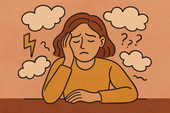
Brain Fog and Fatigue: How to Stop Blaming Yourself
Struggling with brain fog or chronic fatigue? You’re not lazy or failing. Learn how to stop blaming yourself for symptoms caused by MS or chronic illness, and start embracing a more compassionate path to healing and self-understanding.
-

Creating an Emotional Support Team You Actually Trust
Tired of feeling unsupported or misunderstood? Learn how to build an emotional support team you actually trust—with people who see you, hold space for you, and respect your boundaries, especially when living with MS or chronic illness.
-

MS, Vulnerability, and the Fear of Being Seen
Living with MS can make vulnerability feel unsafe. Learn why so many people with MS hide their struggles—and how to gently move toward authenticity, self-acceptance, and deeper connection without shame.
-
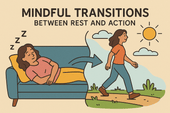
Mindful Transitions Between Rest and Action
Struggling to shift between rest and activity without guilt or overwhelm? This guide offers gentle, mindful strategies to make transitions feel more natural, intentional, and supportive of your nervous system.
-
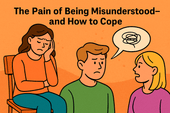
The Pain of Being Misunderstood—And How to Cope
Feeling the sting of being misunderstood? Learn why it hurts so deeply and discover practical, healing strategies to protect your truth, communicate clearly, and rebuild emotional safety when others just don’t get it.
-

Letting Go of Productivity Guilt When You Need to Rest
Struggling with guilt every time you try to rest? Learn how to release productivity shame, understand why rest matters, and embrace a more compassionate rhythm for healing and recovery—without feeling lazy.
-

Rebuilding Energy Reserves Without Shame
-

What to Do If You Feel Emotionally Invalidated by Doctors
Feeling emotionally invalidated by your doctor can be deeply distressing. Learn how to recognize medical gaslighting, validate your own experience, and advocate for better care when you’re not being heard.
-

How to Rest Without Feeling Lazy
Rest isn’t laziness—it’s a necessary act of self-respect. Learn how to shift your mindset, let go of guilt, and embrace rest as a vital part of mental and physical well-being.
-

Redefining Energy Management as Emotional Self-Care
Energy isn’t just physical—it’s emotional. Learn how redefining energy management as emotional self-care can help you protect your peace, support your nervous system, and live more in tune with your true needs.
-
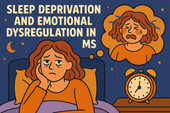
Sleep Deprivation and Emotional Dysregulation in MS
-

How to Cope When Friends Disappear After Diagnosis
Losing friends after a diagnosis can feel like another kind of grief. Discover why some friends disappear—and how to cope with the emotional fallout while building more supportive relationships.
-

How to Talk to Your Kids About MS Without Overwhelming Them
Struggling with how to explain MS to your kids? Learn how to talk to children of all ages about multiple sclerosis with honesty, clarity, and emotional safety—without overwhelming them.
-

MS and the Fear of Emotional Abandonment
The fear of emotional abandonment is common for people with MS. This article explores why it happens, how it impacts your relationships, and how to create emotional safety and healing.
-

Forgiveness, Closure, and Letting Go of the Past with MS
Living with MS often brings emotional wounds from the past. Learn how forgiveness, closure, and letting go can help you heal emotionally—and reclaim peace in the present.
-
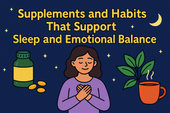
Supplements and Habits That Support Sleep and Emotional Balance
Struggling with poor sleep and emotional ups and downs? Discover calming supplements and daily habits that support deep rest and mental well-being—backed by science and easy to implement.
-

When Insomnia Feels Like Your MS Brain Won’t Turn Off
Struggling to sleep with MS? When your brain won’t shut off at night, insomnia feels relentless. Learn what causes it—and discover science-backed strategies to calm your mind and finally rest.
-

The Emotional Toll of Waking Up Tired Every Day: Why It Hurts More Than You Think
Waking up tired every day takes a deep emotional toll—from mood swings to lost motivation and self-doubt. Learn why chronic fatigue hurts more than you think and how to gently reclaim your mornings.
-
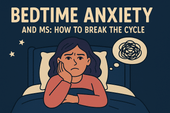
Bedtime Anxiety and MS: How to Break the Cycle
Bedtime anxiety is a common struggle for people with MS—and it’s more than just racing thoughts. Learn how MS-related stress, nervous system dysregulation, and fear of symptoms can create a cycle of sleeplessness, and discover practical, calming strategies to finally reclaim restful nights.
-
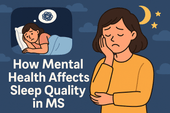
How Mental Health Affects Sleep Quality in MS: Breaking the Cycle of Fatigue and Emotional Distress
Struggling to sleep when you have MS? Discover how anxiety, depression, and neurological changes impact your rest—and what you can do to reclaim it. From CBT-I and calming supplements to lifestyle tips that support both mental health and sleep, this guide offers practical strategies for better nights.
-

Learning to Love Your Life (Even When It’s Not What You Expected)
Your life may not look how you imagined—but it’s still worth loving. Learn how to find peace, purpose, and joy in the unexpected.
-
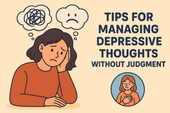
Tips for Managing Depressive Thoughts Without Judgment
Learn how to meet depressive thoughts with compassion, not shame. These gentle, research-backed tools help you manage low moods without self-judgment.
-
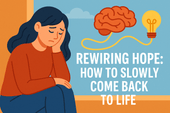
Rewiring Hope: How to Slowly Come Back to Life
Feeling emotionally numb or disconnected? Learn how to gently rebuild hope, one small sensory step and spark of life at a time.
-

Depression and Suicidality in MS: A Conversation That Needs to Happen
Depression and suicidality in MS are real—and urgent. Learn why we must talk about it, how to spot warning signs, and where to find help and hope.
-

Finding Meaning When Life Feels Empty
Feeling disconnected or numb? Discover gentle ways to find meaning again—even in emptiness—through daily rituals, reflection, and purpose.
-
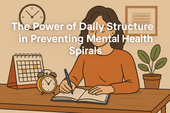
The Power of Daily Structure in Preventing Mental Health Spirals
Daily structure can prevent mental health spirals by creating safety, routine, and self-trust—especially for those with MS, depression, or anxiety.
-

Healing from Emotional Flatness with Sensory Rituals
Feeling emotionally numb or disconnected? Discover how sensory rituals can gently restore pleasure, presence, and emotional resilience.
-

The Role of Light Therapy for Seasonal Depression and MS
Can light therapy ease seasonal depression in people with MS? Discover the science, benefits, and how to use it safely for better mood and energy.
-

Medication vs Therapy: Treating MS-Related Depression Effectively
Explore whether therapy, medication, or both are best for treating MS-related depression. Understand what works, when—and why combination care is often ideal.
-

How to Support a Partner with MS and Depression
Learn how to support a partner living with MS and depression—practical tips, emotional tools, and ways to protect your own mental health too.
-

The Emotional Cost of Losing Your Old Life
Losing your old life to MS isn’t just about physical symptoms—it’s about grieving the identity, dreams, and freedom you once had. This article explores the emotional toll of invisible grief and how to begin healing without denying the pain.
-
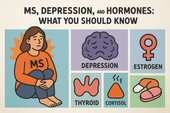
MS, Depression, and Hormones: What You Should Know
MS-related depression isn’t always just emotional—it can be hormonal. Discover how thyroid, sex, and stress hormones influence mood in MS, why women may feel worse during PMS or menopause, and what signs to look for when hormones may be driving emotional instability.
-

MS and Anhedonia: Reclaiming Pleasure One Step at a Time
Anhedonia—feeling emotionally flat or disconnected—is a common but misunderstood symptom of MS depression. This article explores how neuroinflammation, dopamine disruption, and fatigue can dull your sense of joy—and how small, gentle steps can help you begin to feel again.
-
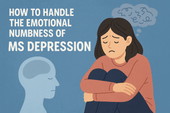
How to Handle the Emotional Numbness of MS Depression
Emotional numbness in MS depression doesn’t always look like sadness—it can feel like nothing at all. Learn why this disconnection happens, how it's tied to neuroinflammation and nervous system overload, and discover science-backed strategies to gently reconnect with your emotions.
-
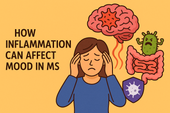
How Inflammation Can Affect Mood in MS
Mood swings and emotional numbness in MS aren’t just psychological—they can be driven by immune system inflammation. This article explores how inflammatory cytokines affect the brain, why mood changes are often biological, and what you can do to calm your nervous system from the inside out.
-
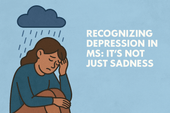
Recognizing Depression in MS: It's Not Just Sadness
Depression in multiple sclerosis (MS) is more than just sadness—it can be a neurological symptom, a side effect of inflammation, or a silent weight that masks itself as fatigue or emotional numbness. This article helps you recognize the hidden signs of MS-related depression, understand the science behind it, and explore real treatment options that support both mental and physical health.
-

Is Cryotherapy Safe for MS? Pros, Cons, and How It Compares to Cold Plunges
Cryotherapy promises quick recovery, inflammation reduction, and mood support—but is it safe for people with MS? This article breaks down the science, risks, and real-life benefits of cryotherapy for multiple sclerosis. You’ll also learn how it compares to cold plunges and which option may be better for calming flares and regulating your nervous system.
-

Can Cold Plunges Help Reduce Inflammatory Flares in MS?
Flares in multiple sclerosis (MS) are often driven by inflammation—but what if cold water could help turn down the heat? This in-depth article explores how cold plunges may help reduce flare frequency and intensity in MS by calming the immune system, lowering pro-inflammatory cytokines, and regulating the nervous system. Learn how to safely use cold exposure as part of your MS recovery routine.
-
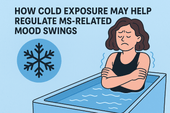
How Cold Exposure May Help Regulate MS-Related Mood Swings
Mood swings are a common but overlooked challenge in multiple sclerosis (MS). This article explores how cold exposure—like cold plunges and showers—may help regulate emotional ups and downs by calming the nervous system, reducing inflammation, and boosting mood-enhancing chemicals. Learn how to use this natural tool safely to support your mental and emotional resilience with MS.
-
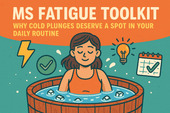
MS Fatigue Toolkit: Why Cold Plunges Deserve a Spot in Your Daily Routine
Fatigue is one of the most debilitating symptoms of multiple sclerosis (MS)—often invisible, misunderstood, and overwhelming. While no single tool can eliminate it, building a personalized fatigue management toolkit can make life more manageable. One surprising contender? Cold plunges. In this article, we explore why cold water immersion might be the refresh button your nervous system needs—and how to safely make it part of your MS fatigue routine.
-
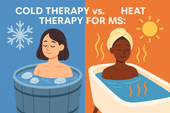
Cold Therapy vs. Heat Therapy for MS: Which One Helps More?
Managing multiple sclerosis (MS) often means navigating symptoms like fatigue, spasticity, pain, and nerve dysfunction. But when it comes to using temperature-based therapies, there’s a question many patients face: Should I be using cold or heat? In this in-depth guide, we explore the benefits, risks, and best use cases of cold therapy vs. heat therapy for MS.
-
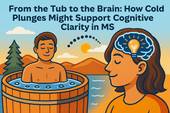
From the Tub to the Brain: How Cold Plunges Might Support Cognitive Clarity in MS
Cognitive fog is one of the most frustrating symptoms of multiple sclerosis (MS). But could cold plunges—those bracing dips into icy water—offer a surprising path to mental clarity? This article explores the emerging science behind cold exposure, brain function, and how a cold tub might help people with MS sharpen focus, lift brain fog, and reset their nervous system.
-
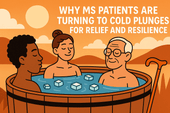
Why MS Patients Are Turning to Cold Plunges for Relief and Resilience
Cold plunges are no longer just for elite athletes and wellness influencers. A growing number of people with multiple sclerosis (MS) are turning to cold water immersion to ease symptoms, build nervous system resilience, and find calm in the chaos of chronic illness. This article explores why—and how—you might want to give it a try.
-
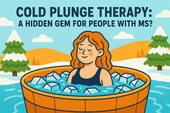
Cold Plunge Therapy: A Hidden Gem for People with MS?
Cold plunge therapy—once the domain of elite athletes and biohackers—is gaining attention among people with multiple sclerosis (MS). Could it help reduce inflammation, calm the nervous system, and ease MS symptoms like fatigue and spasticity? In this article, we dive deep into the science, benefits, safety, and practical application of cold plunges for MS recovery and symptom relief.
-
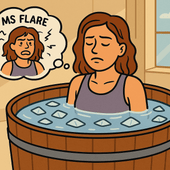
Finding Relief in the Midst of a Flare
MS flares can leave you feeling overwhelmed, exhausted, and mentally foggy. Cold water therapy is emerging as a promising tool to help reset the body and mind after a flare. This article explores how cold exposure supports recovery, calms the nervous system, and can be safely added to your daily routine.
-
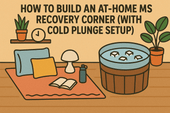
How to Build an At-Home MS Recovery Corner (with Cold Plunge Setup)
Create your personal MS recovery oasis at home—complete with a cold plunge setup. Learn how to design a space that supports healing, reduces inflammation, and helps you manage symptoms naturally.
-
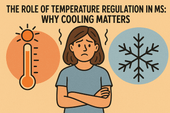
The Role of Temperature Regulation in MS: Why Cooling Matters

















































